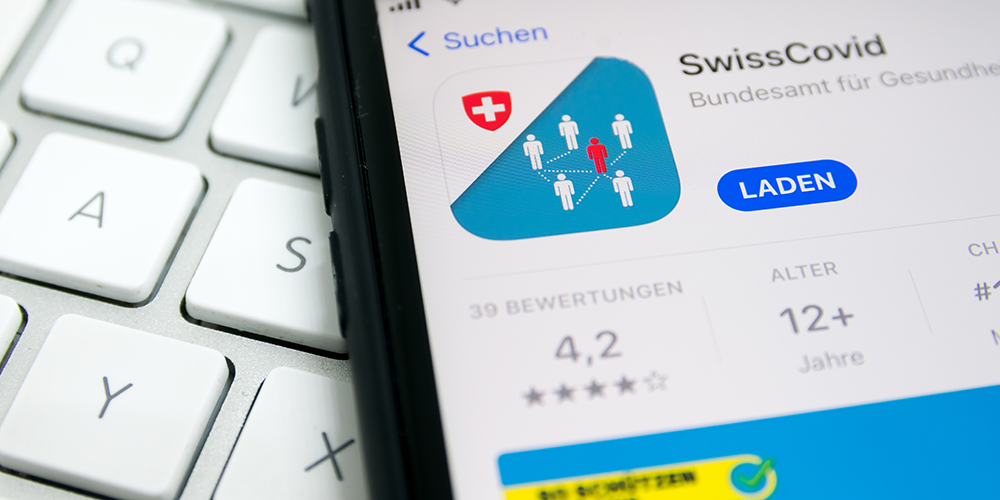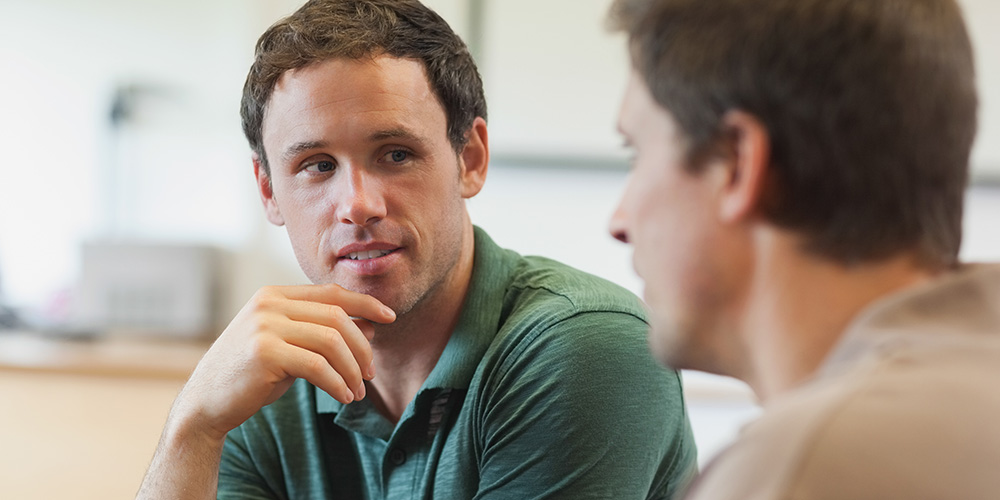Self-interest promotes contract tracing using smartphones
Why do people install a coronavirus warning app on their cell phone – or not? Researchers of the Department of Economic Psychology at the Faculty of Psychology of the University of Basel investigated. The upshot: self-interest and technical understanding are more important than protecting others.
02 September 2021
If you trace when someone infected with coronavirus had contact with others, you can break chains of infection and curb the spread of Covid-19. This contact tracing can be done with the help of apps like SwissCovid, created by the Swiss Federal Office of Public Health. The apps are installed on smartphones, which many people always carry with them anyway (see box below). The more people have activated these warning apps on their cell phones, the better contact tracing works.
Researchers at the University of Basel investigated what motivates people to download the app. Which is more important: selfless reasons or self-protection and an individual’s attitude towards risk? «This psychological perspective has not yet been investigated in the research about coronavirus warning apps,» says cognitive psychologist Dr. Jana Jarecki in explanation of the motivation for the study. The results recently appeared in the journal Humanities & Social Sciences Communications.
Risk perception influences behavior
Altruistic motives include the protection of other people and the collective social effort to « flatten the curve » and avoid overburdening the health care system.
In contrast to this, there are personal motives for using coronavirus apps, which depend on how individuals judge the risk to themselves – such as the risk of becoming infected and suffering unpleasant consequences. It is known from risk research that people generally don’t run a risk if they perceive it as high. However, more risk-tolerant people will take a risk even if they judge it to be on the high side. This means that risk assessment and risk tolerance are also psychological parameters that could affect the use of coronavirus apps.
To explore what actually motivates people to use coronavirus warning apps, the researchers surveyed a representative sample of 757 people from German-speaking Switzerland between the ages of 18 and 79 using an online questionnaire. The survey was held in June 2020 – shortly after the Swiss warning app SwissCovid was launched on the market and before there was an approved vaccine against Sars-CoV-2. At the time of the study, only 27 percent of the Swiss population had installed a coronavirus warning app. The current scientific understanding is that this is too little to effectively counter the virus.
Own welfare trumps thoughts of others
Analysis of the responses showed that two important factors are risk perception and personal attitude towards risk. That means the greater people judge the risk to their own health to be, the more likely they are to use the app. And the lower they judge the risk of misuse of their data, the more likely they are to install the app. However, Jana Jarecki concedes: «Since the survey was held online, we only have self-reported survey data and can’t check whether people who claimed to have installed the Covid app actually did so. But we think the survey respondents had no incentive to lie about this.» A good understanding of how the apps work also very strongly influences their use.
The common good and protection of others play a less important role, even though it seems plausible that people who value the common good would be more likely to use the app. People who judged the risk of coronavirus to the economy to be greater were less willing to use the app. «This contradicts our expectations,» says Jarecki. On the other hand, people who support the general political measures against the spread of coronavirus are more interested in installing the app.
The results make it possible to draw conclusions about where public authorities should start in the future if they want to convince more people to use a warning app: from a psychological perspective, they should emphasize the benefit that the app can reduce the user’s risk of getting sick. «It’s also important to inform people – especially those who aren’t big lovers of technology – how these applications work,» Jana Jarecki summarizes. The argument that warning apps can have a direct social benefit is less motivating.
How contract tracing by apps works
Contact tracing works by causing two cell phones that come close to each other to exchange a one-time, randomly generated numerical code. For a limited time, each phone stores both its own numerical codes and those of the phones that were close to it. If the owner of one of these two phones tests positive for coronavirus and enters this information into the app, the stored numerical codes are used to alert all phones with which the infected person’s phone came into contact within the last two weeks. The other phone owners learn that they may have been in contact with a person who contracted the infection.
Contact tracing using cell phones is a very efficient method of curbing the spread of a virus like Sars-CoV-2. For this measure to be effective, however, a majority of the population would have to use these warning apps and follow their instructions.
Original publication
Albrecht, R., Jarecki, J.B., Meier, D.S. et al. Risk preferences and risk perception affect the acceptance of digital contact tracing.
Humanities & Social Sciences Communications (2021), doi.org/10.1057/s41599-021-00856-0



